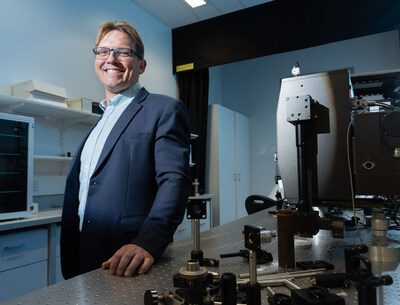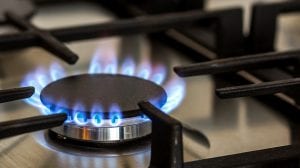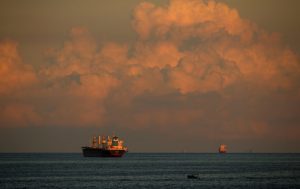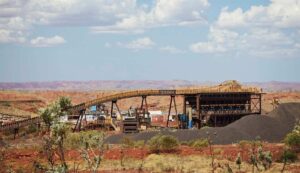Australia’s first laser fusion energy company, HB11 Energy, has signed a bilateral agreement with the University of Salamanca (USAL) and the Spanish Pulsed Lasers Centre (CLPU) to develop hydrogen-boron fusion technology in both countries.
The agreement will give HB11 Energy access to Spain’s most powerful, petawatt-class laser, operated by CLPU. (A petawatt is a quadrillion watts: the US consumes about 4 petawatt-hours per year).
That laser uses similar technology to the US-based Livermore National Ignition Facility (NIF), which made headlines in December last year after achieving a net gain of energy in a fusion reaction for the first time.
Access to CLPU’s laser is crucial for the company because Australia currently lacks the type of laser – an intensely powerful, short-pulse variety – required for the fusion reaction.
HB11 has achieved other significant milestones in its pursuit of a homegrown nuclear fusion breakthrough, including a $560,000 ARC Linkage grant towards the development of a total $1.76 million hydrogen-boron laser fusion project hosted at UNSW. That project will work with collaborators from Macquarie University, the University of Bordeaux, and CLPU.
What is fusion?
Fusion is the process that powers stars like our Sun, and it produces far more energy than nuclear fission (a reaction in which atomic nuclei are split, and which currently powers all commercial nuclear power plants).
Nuclear fusion – in which two or more atomic nuclei are combined – can result in the release of a massive pulse of energy, provided the atomic nuclei produced are lighter than iron-56 or nickel-62.
Hydrogen-boron fusion, the type HB11 Energy are hoping to finesse, also produces no long-term radioactive waste, and fusion reactions in general bear no risk of chain reactions or meltdown.
Fusion has therefore been seen as the golden opportunity of nuclear power, offering the potential to produce far more energy, at far less expense, and with none of risk, nor the pesky waste to clear up afterwards.
Until now, though, fusion ignition has been notoriously tricky to pin down, with the reaction typically requiring more energy to ignite than it produces. Lasers like those at NIF and CLPU have brought scientists a step closer to realising the dream.
“Essentially it shoots out a very, very, very intense burst of light,” explains HB11 Energy’s founder and Managing Director Dr Warren McKenzie.
“And you can compress the light in distance or time so that the actual heat power of the pulse goes up very, very high, well into the petawatt range.”
In the hydrogen-boron fusion reaction, the laser beam hits a fuel pellet that contains high amounts of hydrogen and boron. The hydrogen and boron atoms smash into each other at suitably high speeds to fuse, creating three charged particles (helium atoms), laden with energy.
There’s an added benefit, according to McKenzie: “Unlike other forms of fossil fuel or nuclear energy, the energy contained in charged particles is much easier to collect,” he explains.
Could nuclear energy ever work in Australia?
HB11’s proposed facility is particularly ground-breaking because nuclear power is currently illegal in Australia.
Nuclear power production is not permitted under two main pieces of Commonwealth legislation, the Australian Radiation Protection and Nuclear Safety Act 1998 (the ARPANS Act), and the Environment Protection and Biodiversity Conservation Act 1999 (the EPBC Act).
Nuclear power has also been publicly unpopular in Australia, though recent polls suggest support is on the rise. Both federal and state governments have conducted inquiries into the potential for nuclear energy in Australia.
But McKenzie is optimistic that HB11 Energy’s pilot project – the construction of an experimental hydrogen-boron fusion reactor onshore in Australia – will be feasible, not least because the reaction does not produce neutrons, the harmful by-products of traditional nuclear reactors.
“We don’t expect to be subject to the same regulations – we expect to be subject to the regulations that cover lasers,” he says.
McKenzie hopes that, thanks in part to the stunning NIF result back in December, experimental fusion reactors will begin to proliferate as the prospect of a fusion-fuelled world becomes slightly more plausible.
“The reason I’m optimistic is that the nuclear bans were produced at a time when no one was really thinking about fusion,” he says.
“I think Australia has a really good opportunity to actually establish good modern regulations that take into account fusion as a safer alternative to fission, and in particular hydrogen-boron fusion.”
On the other hand, fusion is so nascent it’s unlikely to be able to solve Australia’s immediate energy issues, with many critics repeating the adage that fusion is at least three decades away.
And some critics of nuclear fission, and nuclear power more generally, worry that focusing efforts on nuclear energy will draw funding and attention away from the already commercially demonstrated options like solar and wind – a valid concern given the immediate need to completely wean off fossil fuels.
But proponents of Australia’s theoretical fusion industry say these fears are baseless, and other researchers argue that ‘nuclear’ has become a dirty word, shrouded in frightening imagery and obfuscating the gaping differences between fission and fusion.
Outside of Australia, other jurisdictions are powering ahead with fusion research, including the US, China, the UK and the EU.
The EU even has its own nuclear fusion roadmap, EUROfusion, that lays out the bloc’s strategy to a fusion-powered future.
Much of the research the EU hopes to perform will happen at the International Thermonuclear Experimental Reactor (ITER), a fusion mega-facility to be completed in France in 2025, which will be run by seven members: China, the EU, India, Japan, Russia, South Korea and the US. Australia has also signed a cooperation agreement with ITER.










